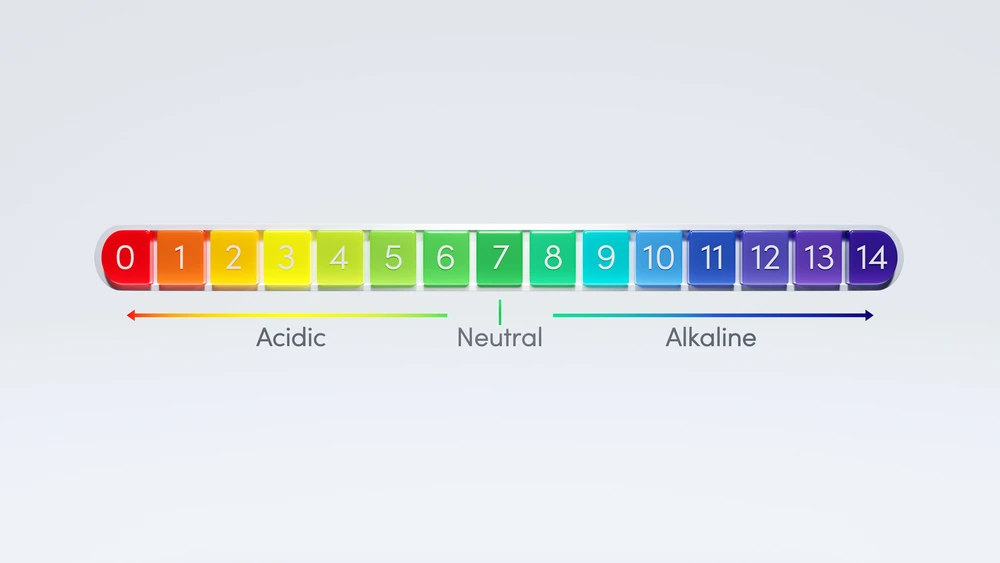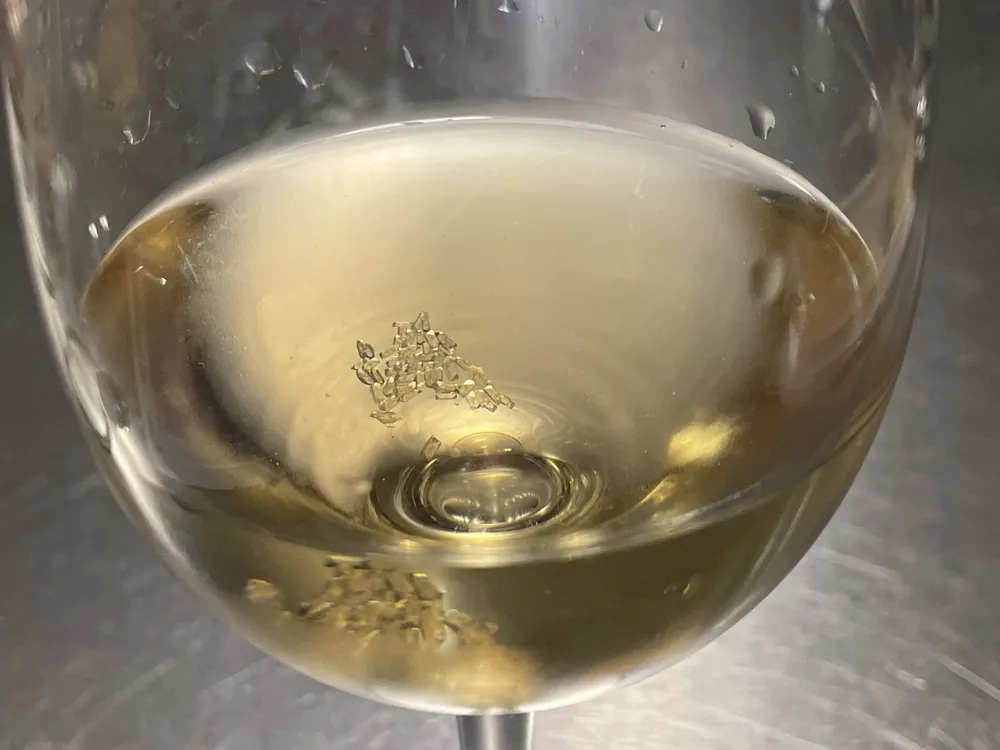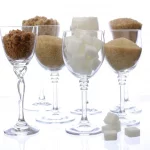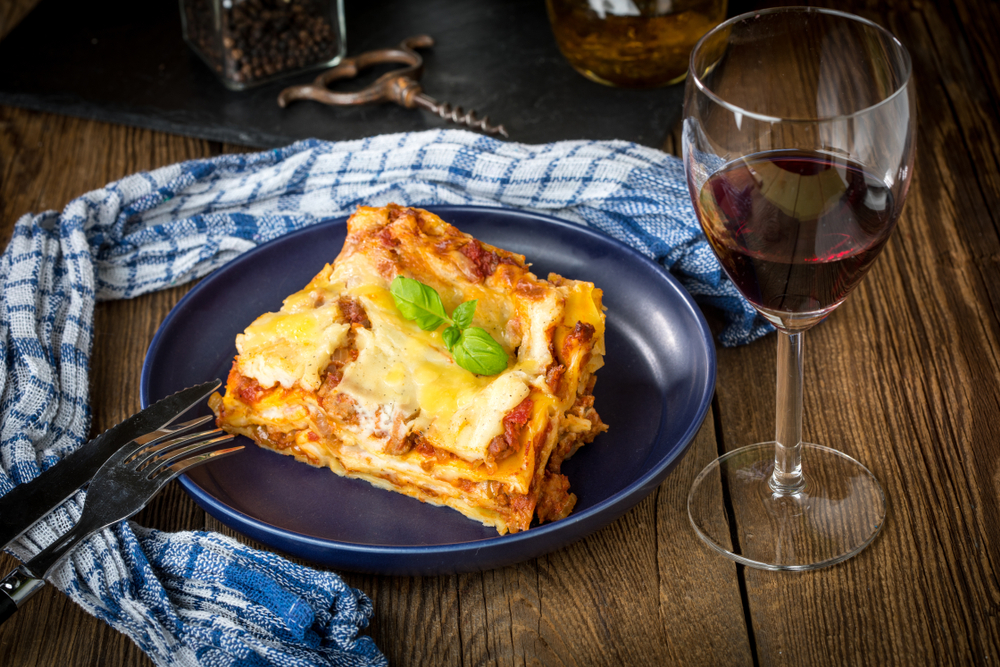Wine acidity can affect your favorite drink’s flavor and aroma in many ways. For example, high acidity can cause a rather sharp taste common in many sweet wines.
Acidity can also affect how well your wine sits in your stomach, with higher acid content naturally causing a higher risk of indigestion and the ever-dreaded acid reflux. Acidity in wines may even cause the never-pleasant “red wine headache.”
In this article, we’re going to take a deep look at wine acidity and how it affects your experience. We’ll discuss why wine is acidic, highlight the four common acid types, and help you choose food pairings that go well with your wine’s acidity level.
We’ll cover many more topics throughout that will expand on your wine acidity knowledge, so let’s just get started without any further delay!

Is Wine Acidic?
Yes, all wines fall on the acidic side of the acid-alkaline scale. Most wines are between 2.5 to 4.5 pH on this scale, which falls under medium to high acidity. The lower the pH, the higher a substance’s acidity.
Anything with a 7.0 pH is considered neutral and anything above that is considered alkaline. However, some wines have much higher acidity than others, depending on many factors.

Why Is Wine Acidic?
The fermentation process, which converts grapes into alcohol, causes wine acidity. This process naturally creates varying acid levels.
Four different fermentation and winemaking factors affect acidity: growing region climate, grape ripeness, wine aging, and any additional acid added during the fermenting process. Riper grapes and a longer aging process all produce lower acidity levels.
Winemakers may add more acid to a wine as it ferments to affect its color, taste, and smell.
For example, adding extra acidity after primary fermentation may give the wine a redder color, produce a sharper taste, or make it smell fruitier.
Typically, this extra acid comes late in the fermentation process, usually after most of the alcohol has been created and the winemakers want to add a little bit of a kick to the wine before serving it.
How Does Climate Affect Wine Acidity?

Warmer climates (California, Australia, etc) produce grapes with lower acidity, while colder climates (France, Maine, Oregon, etc) produce grapes with higher levels.
This base factor is very important and is a big part of regional wine taste differences.
For instance, a Pinot fermented in warm Australian climates is likely to have less acidity than one produced in Northern California or in other milder climates. There are a few reasons for that.
Grapes grown in warmer climates mature and ripen more fully than those grown in colder climates. As a result, their acidity is lower than in colder areas.
Warmer areas also tend to ferment their wine longer than in colder areas because they have more fermentation time before winter falls. They also don’t need to use indoor fermentation tanks, where temperature control may be more challenging.
Colder regions may also use fortification processes to sweeten their wine, due to the grapes being less mature when harvested. Mature grapes have richer sugar content and produce sweeter wines, even when the wine is considered dry.
Cold-region winemakers may also add extra acid to increase their wine’s coloring because cold-grown grapes typically have blander colors because of their lower maturity.
The Types of Acid in Wine
Wine acids include tartaric, malic, lactic, and citrus acids.
Each acid provides distinct elements that affect your wine taste in different ways. They may also affect other elements of your wine, making them important to understand if you’re a wine fan.
Let’s take a brief look at these different acids to give you a more complete understanding of your wine’s overall chemical makeup.
Tartaric Acid in Wine

Tartaric acid is the most common wine acid, and it comes directly from the grapes.
It helps to stabilize a wine’s color and flavors and is heavily affected by soil content, the growing climate, and the grape type.
If you’ve ever seen “wine diamonds” in your drink, that’s crystallized tartaric acid. These crystals are safe to drink, though they might be a bit bitter in wines with a heavy acidity.
Malic Acid In Wine
Malic acid is common in all fruits and is the second most prominent type in grapes.
A grape’s maturity heavily affects its malic acid content, as it decreases as your wine ages.
It can be quite bitter in some young wines and can be balanced using malolactic fermentation or MLF. Winemakers use this technique to decrease the potency of the wine’s malic acid and make it more palpable for wine fans.
Lactic Acid In Wine
Lactic acid affects your wine’s taste in many ways, by creating a rather creamy mouthfeel that may have lingering buttery aftertastes.
This acid type comes naturally through the winemaking process, though some winemakers enhance its profile by adding MLF, which creates a thicker and denser wine.
However, it can also cause hangovers and headaches in people who have wine allergies.
Citric Acid In Wine
Citric acid is not as common in wine but can create a fairly acidic taste when present at high levels.
Typically, it is added to the wine after fermentation because yeast often converts citric acid to acetic acid, which is rather bitter and unpleasant.
A small amount of citric acid goes a long way in wine, so winemakers typically add only small amounts to avoid bitter acidity.
Which Wines Are The Most Acidic?

While acidity may vary heavily based on many factors, white wines are typically the most acidic types, with acidity ranging from 3.0 to 3.5 pH.
Port wines are often considered the most acidic wines, with a pH of 2.9. Riesling, Sauvignon Blanc, Chenin Blanc, Chardonnay, Pinot Noir, and Grenache are all considered high-acid wines and typically have acidity below the 3.4 pH level.
In general, white wines have an acidity level that is just a little higher than lemonade and Coca-Cola, which both have acidity nearing 2.0. This low pH level makes lemonade and Coca-Cola some of the most acidic drinks on the market.
That extra acidity has the added benefit of adding a bit to the wine’s taste, creating a crisper feel that often goes well with many wine types and flavors.
Generally, sweet wines are the most acidic types and have a pH range of 3.0. Light-bodied whites fall within the 3.1 to 3.5 range. Red and white combination wines typically range from about 3.5 to 3.8 pH.
Understand that these acidity levels will vary based on the wine manufacturer, the wine’s fermentation location, and much more. That makes taste testing so important for wine fans.
You can typically tell right away when a wine has a high acidity if it feels crisp on the tongue, rather than soothing.
You’ll notice a pleasant bite that gives the wine a unique texture and flavor. Some people love that kick, while others may not.
There’s nothing inherently wrong with a high-acid wine, as long as you enjoy the taste and don’t experience any side effects, like acid reflux.
Which Wines Are The Least Acidic?

Red wines typically have the least acid of all types, particularly late-harvest wines harvested in warm climates. Options like Cabernet Sauvignon and Sangiovese all have fairly low acidity levels for wine.
Understand, though, that all wines are considered acidic and fall low on the acidity scale. For example, even the least-acidic wines are more acidic than coffee, which is a fairly acidic drink at 4.5 to 5.0 pH.
Typically, you’ll notice red wines coming in at about 3.8 to 4.4 pH, depending on the type you purchase.
Wines fermented from grapes grown in Australia, Africa, Southern Greece, Southern Italy, and Mexico typically have less acidity than others.
You can read your wine’s label to discover where it was fermented and grown: this should give you a good idea as to whether it is low in acidity or not.
It is important to note that red wines typically have more lactic acid than white wines, which is the acid that causes “red wine headache.” That’s because some winemakers add extra lactic acid to their reds to give them more of a kick.
If you don’t suffer from acid reflux or indigestion but do experience red wine headaches, you may want to stick to white wines with less lactic acid content.
What is Acid Reflux?

Acid reflux is a condition where stomach acid flows into the esophagus in your throat and causes a burning feeling, a sour taste, bloating, and general sickness.
This reaction is caused by Gastroesophageal Reflux Disease or GERD, an affliction that affects one out of every five people in the world. Many factors can cause this reaction and may worsen a person’s symptoms.
For example, triggers like spicy foods can worsen a person’s reaction. It’s not uncommon for people to experience this reaction after eating artificially spiced foods, including those at various Indian or Thai restaurants.
Other causes may include stress and anxiety, which can cause a person’s stomach to churn and to push acid higher up in their throat as a result.
Unfortunately, acid reflux may also be caused by highly acidic foods and even alcohol, which is a real concern for people who love wine.
Understanding the connections between wine and acid reflex is important because it may dictate what wine types you can enjoy.
Thankfully, there are ways that you can counteract this problem, including various treatments and even food pairing options.
Wine and Acid Reflux
As alcohol and acidity can trigger or worsen acid reflux, wine is often not a great option for people who suffer from this condition.
The wine’s alcohol can produce more stomach acid and make the stomach’s tissues more sensitive to this acid.
It also relaxes your stomach’s muscles, which makes stomach acid more likely to flow. The acidity also intensifies your stomach’s acid production, which could lead to more reflux problems.
Conflicting research evidence finds that both red and white wines may worsen acid reflux, though some studies have shown that reds may help.
For example, one study found that red wine may protect your stomach by increasing beneficial bacteria growth in your intestines. Even white wines may cause some protection, though it is clear that more research must be done to confirm this fact.
Which Wines Are Best For Someone Who Gets Acid Reflux?

Low-acid wines like Merlot, Viognier, and Grenache Blanc are probably the best wine options for people who have acid reflux.
Try to focus on grapes grown in warm-weather climates, such as Southern California, Australia, and Africa. Avoid wines created in France, Northern California, and in other Midwestern states. They’re likely to have a higher acidity that could affect your reflux.
Wines to avoid include Pinot Noir and Sauvignon Blanc, as they naturally have high acidity and can trigger many bad stomach reactions.
Sweet white wines are also best avoided, so if you do like whites, try to enjoy drier options. Though still more acidic than reds, they can minimize your reactions.
Red and white combinations may also be a good idea because they blend white taste with red mildness.
Techniques for Reducing Wine Acidity
If you want to decrease your wine’s acidity level, here are three techniques that may help:
- Dilution: Adding distilled water to your wine can lower your wine’s acidity and make it more palpable. It does affect the taste, though, so make sure you add as little as possible.
- Neutralization: Some wine shops may sell Acid Reducing Crystals that help create acid crystals in your wine. You can either filter these crystals out of your wine after using them or spit them out.
- Malolactic Fermentation: Buy a separate MLF kit and use it to remove your acidity. Understand that this process may affect your wine’s flavor.
Balancing Food Pairings Based on Acidity

Choose the following foods to either minimize or balance your wine’s acidity:
- Cheese: Most cheese has a rather salty and creamy taste and texture that cuts through your wine’s acidity. It helps balance the overall taste and texture of your wine and may help it settle more comfortably in your stomach.
- Bread: Pieces of bread can literally absorb much of your wine’s acidity and help it settle more easily in your stomach. Plain bread or anything with low-acid butter or mustard should help balance your wine’s intensity a little.
- Summer Salads: A light salad with low-acid fruits and minimal dressing can help balance your wine’s acidity and bring out its inherent textures. Apples and cranberries go perfectly with this salad and your wine’s acidity. It also adds subtle aromas and flavors to your wine that enhance its quality.
- Shrimp Cocktail (and More) Wine Pairing Guide - 09/06/2022
- What Wine Serving Sizes Look Like: Standard Size and More - 08/06/2022
- How Much Sugar is in Wine: Glass and Bottle Sugar Content - 08/06/2022






